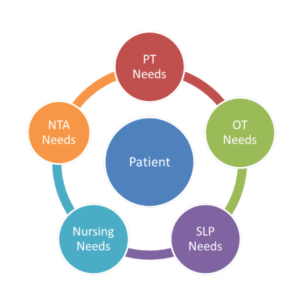MedPAC targets Medicare payments to SNFs
The Medicare Payment Advisory Commission (MedPAC) is considering recommending to Congress that Medicare payments to skilled nursing facilities be rebased and reduced, contending that free-standing SNFs are making a killing on Medicare with Medicare margins averaging 18.5 percent in 2010.
Principal Policy Analyst Carol Carter, PhD, in making that recommendation to the panel at its December 2011 meeting, debunked the industry’s contention that subsidizing Medicaid through Medicare is needed because of heavy losses in treating Medicaid patients. She said the non-Medicare margin for SNFs was -1.2 percent, but the total margin, including all sources of revenue, was 3.6 percent—up slightly from 2009.
Under the proposed rebasing plan, which would have to be approved by Congress, there would be a zero update in 2013, followed by an initial reduction of four percent in 2014 and subsequent reductions over a transition period “until Medicare payments are better aligned with provider costs.”
The transition period, Dr. Carter said, would allow the Centers for Medicare & Medicaid Services (CMS) to assess each year how the industry is faring and if beneficiaries continue to have access to care, which she said is currently holding steady.
Medicare payments, Dr. Carter said, should be rebased for these reasons:
● Medicare margins have been above 10 percent since 2000.
● A variation in Medicare margins within the industry is not explained by differences in patient mix.
● Cost differences are unrelated to wage levels, case-mix or beneficiary demographics.
● Relatively efficient providers show it is possible to have low costs and high quality.
● Some Medicare Advantage payments are considerably lower than fee-for-service payments.
● Industry costs have exceeded the annual update each year since 2001.
“These factors show that the PPS (prospective payment system) has exerted too little fiscal pressure on providers,” she said, adding that differences in Medicare margins between types of facilities highlight the need to revise the PPS and reflect its shortcomings. She said Congress should approve changes recommended in 2008, which included a separate component for nontherapy ancillary services and basing therapy payments on care needs, not service provision.
Without raising total spending, those changes would reduce payments by about 10 percent for SNFs with high shares of intensive therapy, while those with high shares of medically complex days would experience a 17 percent increase, Dr. Carter estimated. About three-fourths of hospital-based facilities would see increases of about 10 percent, although others would see decreases of similar amounts.
“This recommendation would decrease program spending relative to current law,” Dr. Carter projected. “For beneficiaries, fairer payments across all types of care may result in providers being more likely to admit and treat beneficiaries with complex care needs. Provider payments will be lower, but the difference in Medicare margins across facilities will be smaller.”
The impact on individual providers, she said, will be a function of patient mix and current practice patterns. Dr. Carter countered the industry’s contention that it needs high Medicare margins to cover losses incurred in caring for Medicaid patients.
“A key argument the industry makes against rebasing is that facilities lose money on Medicaid and need the high payments from Medicare to be viable,” Dr. Carter said. “Using Medicare payments to subsidize Medicaid is poor policy for a number of reasons.”
She said using Medicare to subsidize Medicaid would help facilities with many Medicare patients—the facilities that need help the least. Such a policy would not discriminate between states with relatively high and low payments, and if Medicare rates were maintained or increased, states could be encouraged to freeze or lower their rates.
Moreover, she added, payroll taxes that finance the trust fund subsidize the low payments from other payers, and if Congress wants to help nursing facilities with large numbers of Medicaid patients, a separately finance and targeted program should be established.
As Dr. Carter discussed the recommendations with MedPAC, the Alliance for Quality Nursing Home Care said MedPAC should make Medicare funding decisions based upon “the significant, documented underfunding” of SNF care by state Medicaid programs.
“In sum, the idea that Medicare can or should look at SNF payment rates in a vacuum fails to acknowledge the practical reality that the Medicare and Medicaid populations overlap in these settings and ignores the crucial influence that Medicare rates have on improving outcomes for all patients,” said Alan G. Rosenbloom, Alliance president. “While it may make theoretical sense to assert that Medicare should pay only for Medicare beneficiaries, in practice, this vastly oversimplifies how this sector of healthcare operates—and misjudges how services are ultimately financed for this patient population.”
His comments followed release of a study by the American Health Care Association (AHCA) finding that nursing homes nationwide operated at a margin of 0.75 percent in 2009. The study projects that proposed government payment policies could result in margins following as low as -3.1 percent over 10 years.
Rosenbloom said a separate survey of SNFs shows that facilities plan to lay off more than 20,000 workers as a result of a new CMS regulation reducing Medicare funding by 11.1 percent.
“This could be a replay of the early phases of the SNF PPS when roughly 20 percent of nursing facilities filed for bankruptcy, nursing staffing levels plummeted 17-33 percent, and survey deficiencies increased significantly,” he warned.
Bob Gatty has covered governmental developments for the trade and business press for more than 30 years. He is founder and president of G-Net Strategic Communications, Sykesville, Md.

Robert Gatty has more than 40 years of experience in journalism, politics and business communications and is the founder and president of G-Net Strategic Communications based in Myrtle Beach, South Carolina. He can be reached at bob@gattyedits.com.
Related Articles
Topics: Articles , Medicare/Medicaid











